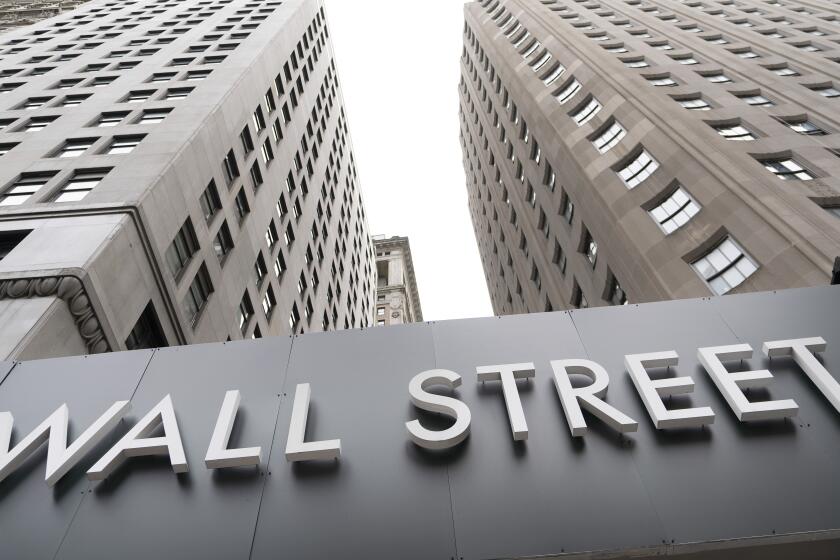Chinese stocks slump 7.6%, but other Asian markets rise
- Share via
reporting from TAIPEI, Taiwan — Asian stocks generally rebounded Tuesday after being dragged down for days by a slide in the Chinese market. But sharp losses continued on the mainland, with the Shanghai Composite dropping an additional 7.6% and the Shenzhen exchange down by a similar percentage.
Singapore’s Straits Times Index rose 1.7%, Australia’s main index jumped almost 3%, South Korea’s Kospi gained nearly 1%, Taiwan’s Taiex was up about 3.6% and Hong Kong’s Hang Seng Index closed up 0.7%. Yet Japan’s Nikkei fell almost 4%. European markets opened up.
Declines were sharp again on the Chinese mainland. The Shanghai Composite closed at 2964.97, down more than 40% from its June high of 5178.19. That follows a more than 8% drop on Monday and a 4% drop on Friday. Still, the index remains more than 33% higher than its levels of a year ago, thanks to the massive run-up the market has seen over the last 12 months.
China’s Nasdaq-style ChiNext index was also off more than 7% on Tuesday.
China’s central bank announced that it was cutting its benchmark interest rate by 0.25 percentage point to 4.6% for a one-year loan, and that its one-year rate for deposits would fall by the same amount, to 1.75%.
To increase liquidity, China also said it had pumped more than $23 billion into the financial system via reverse repurchase or “repo” agreements with banks. Under such arrangements, the central bank essentially buys securities from banks for a short time with an agreement that they will be repurchased later. And it reduced the reserve rate ratio for banks, lowering the amount of reserves they are required to have on hand.
Since June, when Chinese shares began to tumble, regulators in Beijing have adopted a host of policies including supplying hundreds of billions of dollars to a state agency to support stock purchases, halting IPOs, banning selling by large shareholders and directing state-owned firms to buy shares.
The extensive interventions have alarmed some analysts who believe China’s previous moves amounted to unjustified state action to prop up a market at levels that do not reflect economic fundamentals.
China’s gross domestic product, which for most of the last three decades grew at double-digit pace annually, has been slowing. Chinese authorities have set a 7% growth target for 2015, billing such lower growth as “the new normal.” Many outside analysts believe that China will have a hard time hitting that target this year, with the country finding it hard to spur domestic consumption to make up for slowing exports and investment.
China’s exports were down 8% year-on-year in July; car sales were down 7%.
China’s state-run media sought Tuesday to offer some words of reassurance. The official New China News Agency ran a prominent news analysis titled “Chinese economy shows resilience, innovative potential despite concerns over currency, growth.”
The state-run nationalist tabloid Global Times conceded that China’s economy was in a “bitter period of structural adjustments” and that investors lacked confidence in the economy and were focused on short-term gains.
Still, the paper advised readers: “We should become inured to face all sorts of problems with grace. This temporary lack of confidence will not snowball to become destructive.”
Follow @JulieMakLAT for news from China
More to Read
Inside the business of entertainment
The Wide Shot brings you news, analysis and insights on everything from streaming wars to production — and what it all means for the future.
You may occasionally receive promotional content from the Los Angeles Times.











